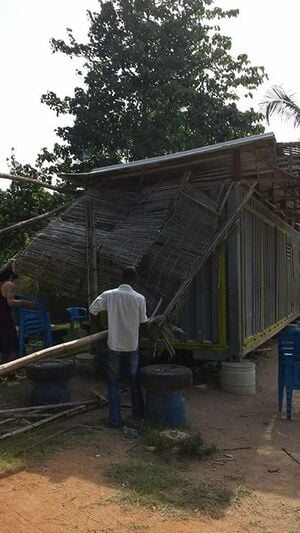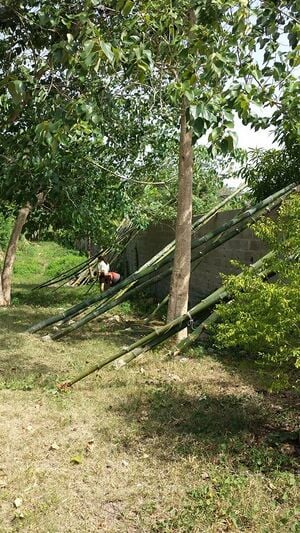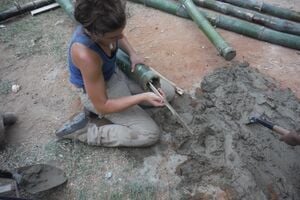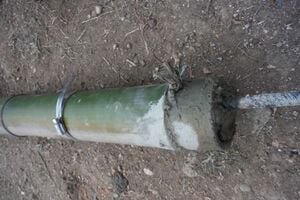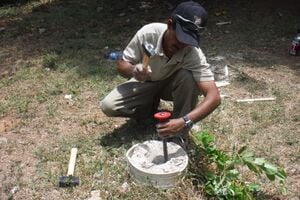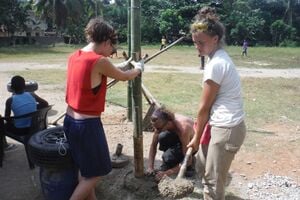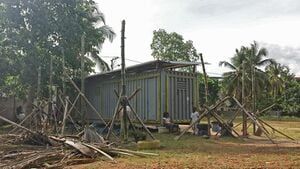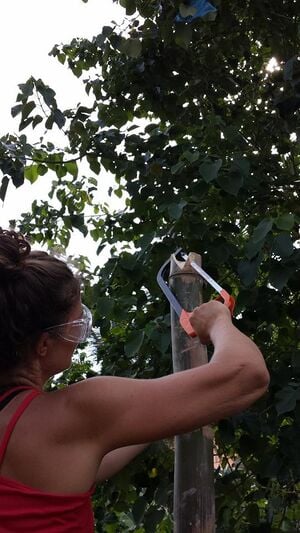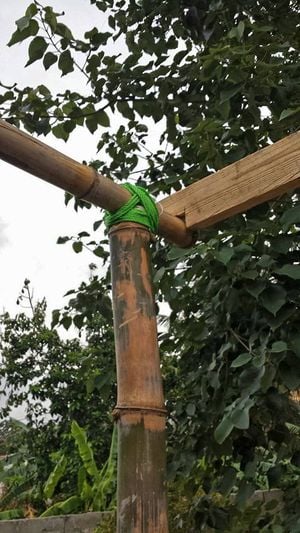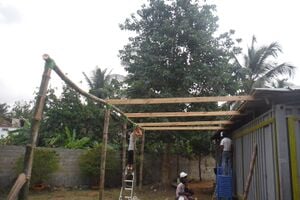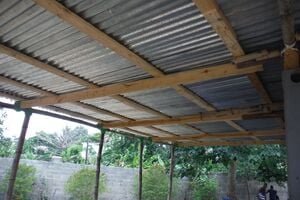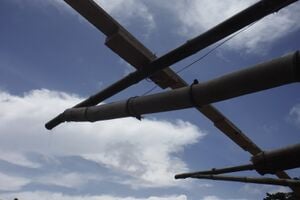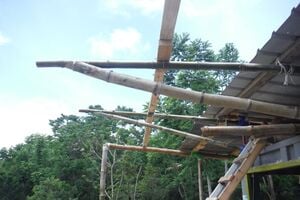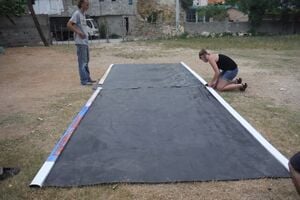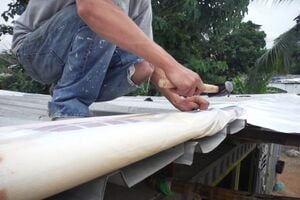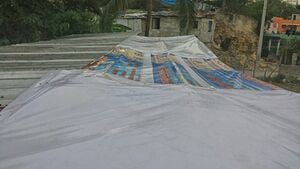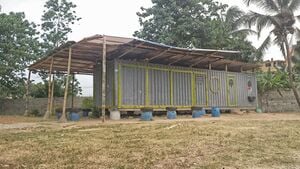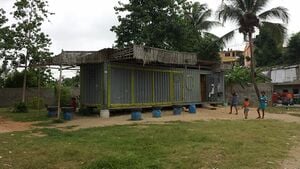
This project is a collaboration between students enrolled in the Practivistas Dominicana Program and the rural community of Las Malvinas in Santo Domingo, Dominican Republic. The community center in Las Malvinas currently functions as a space for the community to hold meetings and workshops; however, the lack of a durable shade and rain-proof structure along the outside of the building has prevented the community from being able to use the space when weather conditions are too hot or too rainy.
The client at hand is the community of Las Malvinas in Santo Domingo, Dominican Republic. They have requested that a rain/shade structure be built by Practivistas Dominicana at their local community center (Estacion Ecological Comunitario) between May-July 2014. Three of the students working on the project are from Cal Poly Humboldt in California and one student from Universidad Iberoamericana in Santo Domingo, Dominican Republic. After a community meeting was held, it was determined that the structure should be able to protect from rain as well as sun so the community could hold meetings, classes and workshops in comfort. Community members voiced their opinions that aesthetics, durability, and locality of materials were some of their main concerns in regards to the construction of the structure. Bamboo and palm fronds are some of the possible local materials that could be utilized.
Building a Bamboo Shade Structure[edit | edit source]
These are the instructions for the assembly and construction of a bamboo shade structure designed by students enrolled in the Practivistas Dominicana Program in the Dominican Republic. The shade structure consists of bamboo, upcycled billboard tarps and flattened steel drums. Instructions are included below.
How to build[edit | edit source]
Before building with bamboo, it is advised to research techniques and recommendations for appropriate season for harvesting as well as methods of harvesting and drying. (For our project we used bamboo that was still partially green which is not desirable but was necessary based on time and resource constraints).
After taking proper measurements for the location of your desired shade structure, cut bamboo to appropriate lengths. Make a concrete mixture to secure the poles into the ground surrounding the perimeter of the existing structure. Insert rebar into the center of the bottom culm and ensure that the concrete is inside the entire bottom culm.
Video[edit | edit source]
Design[edit | edit source]
-
Fig 1: Shade design angle 1
-
Fig 1a: Shade design angle 2
-
Fig 1b: Shade design angle 3
Costs[edit | edit source]
This is the proposed draft budget for the shade structure.
| Quantity | Material | Source | Cost (RD$) | Total (RD$) |
|---|---|---|---|---|
| Rope | Las Malvinas | 400 | 400 | |
| 15 | Wire | Arroyo Norte | 140 | 140 |
| 20 | Corrugated Zinc Sheets | Las Malvinas | 1,000 | 1,000 |
| 15 | 2x4s | Arroyo Norte | 2,000 | 2,000 |
| 3 | Recycled Billboards | Billboards 'R Us | 333 | 1,000 |
| 15 | Recycled 55gal Drums | Arroyo Norte | 300 | 4,500 |
| 1 | Tools | Nacional | 2,183 | 2,183 |
| 1 | TBD | Santo Domingo | 8000 | 8000 |
| Total Cost | $15,683 | |||
Next steps[edit | edit source]
The bamboo used during this construction was not fully dried or cured and more preparation of the culms is highly desirable. However, this structure was secured using only lashing on the bamboo and not using nuts or bolts in the still drying bamboo. This type of securing will prevent cracking that would have occurred if hardware were to be used at the joints. Holes were drilled in the bamboo posts to secure the 2x4s and bamboo beams through lashing. Further inspection in the future is necessary to check if cracking has occurred.
- Testing the bamboo for moisture content while watching its durability and strength to determine whether the drying time was sufficient or whether it was an issue in maintaining the integrity of the structure over time.
- Adding more bamboo support beams under the billboard so the vinyl will lay more flat.
- Checking the vinyl to ensure there has not been tears in the panels.
Conclusions[edit | edit source]
The finished shade structure consisted 2x4s lashed to bamboo poles which were filled with concrete and rebar and then sunk into holes in the ground filled with concrete. On one side of the fogon corrugated zinc panels were installed, and on the other side of the fogon the team built a bamboo truss. The team installed billboard vinyl panels over the bamboo truss by nailing down the vinyl to the zinc roof, and at the other end of the panel the team lashed onto the bamboo posts. On the side of the fogon with the billboard vinyl, it will be necessary to install more bamboo support beams underneath the vinyl to ensure its security and flatness.
Contact details[edit | edit source]
- Baron Creager: bmc83@humboldt.edu
- Caitlin Faber: cjf336@humboldt.edu
- Caelidh Liddell: crl307@humboldt.edu
- Marjorie Casado: marjocalara@gmail.com
